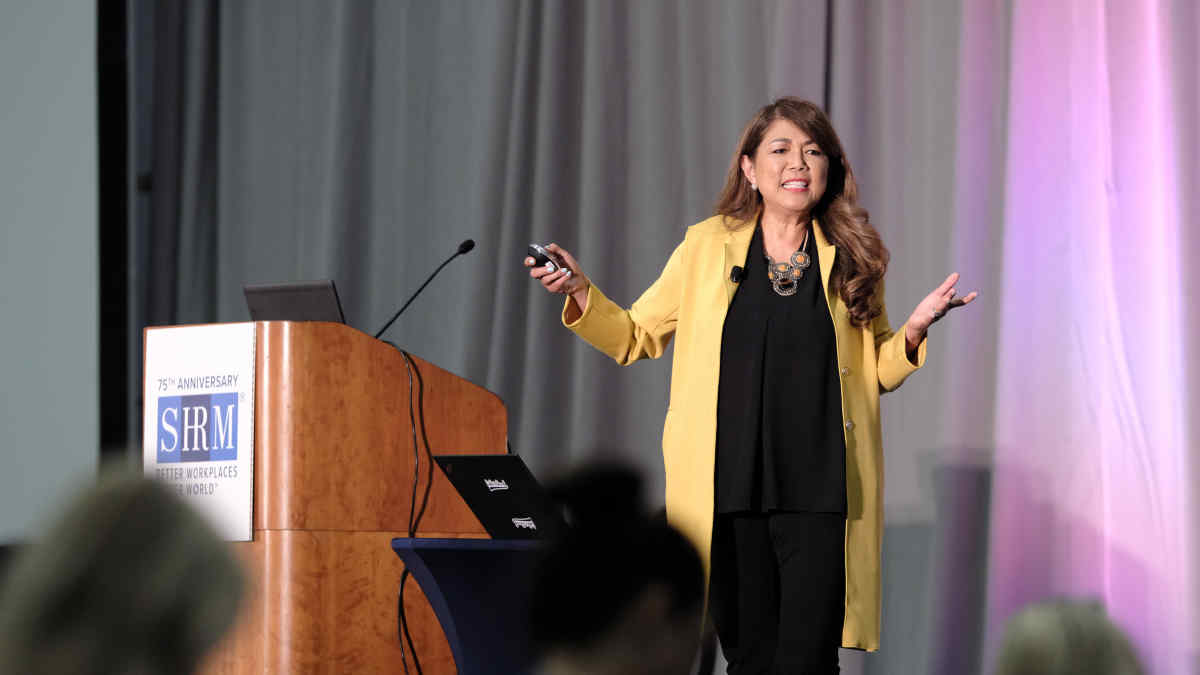Confront Ageism to Create a Workplace Where All Generations Thrive
Confront Ageism to Create a Workplace Where All Generations Thrive SHRM


Confronting Ageism: Unleashing the Power of a Multigenerational Workforce

Introduction
During the SHRM INCLUSION 2023 conference on November 1st in Savannah, Georgia, Sonia Aranza, CEO and principal consultant at Aranza Communications, addressed the issue of ageism. She emphasized the importance of understanding the impact of age bias in the workplace, especially as five generations are now working side by side in the United States.
The Five Generations
Aranza highlighted the characteristics and experiences of each generation:
- Generation Z: Born between 1997 and 2012, the oldest members of this generation are currently 26 years old. They prioritize job satisfaction, value mobility and exploration, possess a global mindset, and are known for their boldness, fearlessness, and innovation.
- Generation Y/Millennials: Born between 1981 and 1996, Millennials make up 35 percent of the U.S. workforce. They grew up with messages such as “You are special” and “Express yourself,” and were often told they were all winners. They value individuality and seek meaningful work.
- Generation X: Born between 1965 and 1980, Generation X saw significant changes in their households as both parents started working outside the home. They are independent and prefer leaders who provide a clear mission and vision, allowing them the freedom to accomplish their tasks.
- Baby Boomers: Born between 1946 and 1964, Baby Boomers were raised to live up to expectations and be achievers. They value stability and purpose in their work, and many continue working past retirement age for various reasons.
- Traditionalists: Born in 1945 or earlier, Traditionalists grew up with messages of sacrifice and hard work. They believe that work is a privilege and value loyalty and respect.
Addressing Ageism
Aranza emphasized the need to confront ageism in the workplace and provided several strategies to promote age diversity:
- Avoid normalizing ageist comments and attitudes, both towards older and younger workers.
- Include anti-ageist language in company policies and diversity strategies.
- Educate managers and employees about age bias.
- Review recruitment, hiring, and promotion processes to eliminate age-related information requests.
- Create intergenerational mentoring programs and establish inter-generational employee resource groups (ERGs) that benefit all generations.
- Recognize the impact of intersectionality, considering how age intersects with gender, race, and job position.
- Practice self-awareness, challenge ageist behavior, and connect with people of all ages.
Conclusion
Confronting ageism is crucial for building a multigenerational workforce that leverages the unique strengths of each generation. By embracing age diversity and promoting inclusivity, organizations can contribute to the achievement of the Sustainable Development Goals (SDGs), particularly SDG 10 (Reduced Inequalities) and SDG 8 (Decent Work and Economic Growth).
SDGs, Targets, and Indicators
| SDGs | Targets | Indicators |
|---|---|---|
| SDG 10: Reduced Inequalities | Target 10.2: By 2030, empower and promote the social, economic, and political inclusion of all, irrespective of age | No specific indicators mentioned in the article |
| SDG 5: Gender Equality | Target 5.1: End all forms of discrimination against all women and girls everywhere | No specific indicators mentioned in the article |
| SDG 8: Decent Work and Economic Growth | Target 8.5: By 2030, achieve full and productive employment and decent work for all women and men, including for young people and persons with disabilities, and equal pay for work of equal value | No specific indicators mentioned in the article |
| SDG 4: Quality Education | Target 4.7: By 2030, ensure that all learners acquire the knowledge and skills needed to promote sustainable development, including among others through education for sustainable development and sustainable lifestyles, human rights, gender equality, promotion of a culture of peace and non-violence, global citizenship, and appreciation of cultural diversity and of culture’s contribution to sustainable development | No specific indicators mentioned in the article |
Behold! This splendid article springs forth from the wellspring of knowledge, shaped by a wondrous proprietary AI technology that delved into a vast ocean of data, illuminating the path towards the Sustainable Development Goals. Remember that all rights are reserved by SDG Investors LLC, empowering us to champion progress together.
Source: shrm.org

Join us, as fellow seekers of change, on a transformative journey at https://sdgtalks.ai/welcome, where you can become a member and actively contribute to shaping a brighter future.







